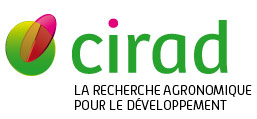Advances in participatory cotton breeding in Benin
Lewicki S., LanûÏon J., Djaboutou M., Sûˆkloka E., Takpara D., Assogba L., Orou Mousse B.I.. 2004. In : Swanepoel A. (ed.). Proceedings of the world cotton research conferences - 3. Cotton production for the new millennium. Rustenburg : ARC-IIC, p. 227-232. World Cotton Research Conference. 3, 2003-03-09/2003-03-13, Cape Town (Afrique du Sud).
The main objectives of the participatory cotton breeding program in Benin are (1) to improve the information flow between producers and researchers, particularly for a better understanding of users requirements, (2) to breed for genotype x environments interactions in four typical agro climatologic sites. The original population was composed of intercrossing 14 genotypes of diverse origins. Four breeding cycles have already been accomplished. In each cycle, 200 plants are chosen on the three sites managed by farmer-breeders as well as on the one managed by formal breeders. Out of these, the best 50 are finally selected jointly by farmers and researchers for the quality of their fiber and sown as a mixture the following year. The populations selected in all four sites are compared with the original population and two commercial cultivars in a five locations trial in order to evaluate the genetic progress realized at each site. Results are summarized throughout a Principal Component Analysis including yield, earliness and plant development characteristics. They show that (1) genetic progress occurs in all selected populations, (2) breeding sites are easily differentiated, (3) former-breeders populations are more productive and (4) populations selected by formal breeders are less developed, Next steps will include stabilizing the populations and quantifying the respective effects of Environment and Breeder on these results,.
Mots-clûˋs : gossypium; gûˋnotype; amûˋlioration des plantes; petite exploitation agricole; transfert de technologie; bûˋnin
Documents associûˋs
Communication de congrû´s
Agents Cirad, auteurs de cette publication :
- Lewicki Sylvie — Dgdrs / Dgdrs
